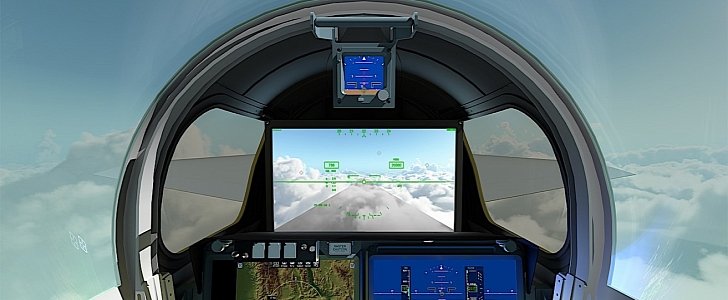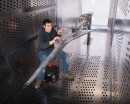Thanks to the almost flawless design of airplane systems, pilots trust the machines with their lives. Their trust is probably fueled by the fact that, even if the plane flies itself, they can still directly see what’s going in front of them. But what if the next airplane would have no windows whatsoever?
Presently, in parallel with its efforts to return to the Moon and set a human foot on Mars for the first time, NASA is trying to revive supersonic passenger flight here on Earth. The tool of choice for this task is the QueSST X-Plane, or the Quiet Supersonic Transport.
The actual plane is probably decades from reality, but a scaled-down test version is in the works. Called X-59 QueSST, the prototype will be built by Lockheed Martin in 2021.
As the design process for the test plane continues, NASA released this week the first image of QueSST’s cockpit, showing a very peculiar concept, never before tried in civilian aviation.
The image shows a cockpit with no forward-facing window. It uses a 4K monitor instead, called eXternal Visibility System (XVS).
The monitor is being fed images taken by two cameras outside the aircraft and combines them with available terrain data to create a more comprehensive image for the pilot. Visual aids for airport approaches, landings and takeoffs can also pop-up on the screen when needed.
NASA does not say how big the screen is, but does add the pilot will not be robbed the chance of seeing the horizon, as the two portals and canopy are real windows.
The space agency says it chose this solution for the prototype because it allows it to meet its main goal, which is reducing “sonic boom to a gentle thump.”
Currently, supersonic flight over land is prohibited on Earth, as a result of the huge number of claims filed between 1950 and 1960.
Supposedly, the design of the QueSST will allow it to go supersonic whenever it wants while generating 60 dB of sonic boom, the volume you get in a normal conversation with a friend. This while moving at about 1,100 mph (1,770 km/h).
The actual plane is probably decades from reality, but a scaled-down test version is in the works. Called X-59 QueSST, the prototype will be built by Lockheed Martin in 2021.
As the design process for the test plane continues, NASA released this week the first image of QueSST’s cockpit, showing a very peculiar concept, never before tried in civilian aviation.
The image shows a cockpit with no forward-facing window. It uses a 4K monitor instead, called eXternal Visibility System (XVS).
The monitor is being fed images taken by two cameras outside the aircraft and combines them with available terrain data to create a more comprehensive image for the pilot. Visual aids for airport approaches, landings and takeoffs can also pop-up on the screen when needed.
NASA does not say how big the screen is, but does add the pilot will not be robbed the chance of seeing the horizon, as the two portals and canopy are real windows.
The space agency says it chose this solution for the prototype because it allows it to meet its main goal, which is reducing “sonic boom to a gentle thump.”
Currently, supersonic flight over land is prohibited on Earth, as a result of the huge number of claims filed between 1950 and 1960.
Supposedly, the design of the QueSST will allow it to go supersonic whenever it wants while generating 60 dB of sonic boom, the volume you get in a normal conversation with a friend. This while moving at about 1,100 mph (1,770 km/h).





